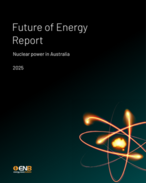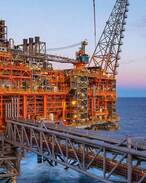This article is 9 years old. Images might not display.
On the same day the oil price hit a fresh 13-year low, the company said its revenue plunged from $7.076 billion in 2014 to $4.496 billion in 2015 as global energy prices collapsed, despite generally robust production of 92.2 million barrels of oil equivalent, down from 2014's record 95.1MMboe.
Despite the economic headwinds, the past year was still Woodside's second best, although the trend is definitely heading further south than the board or shareholders would like, with quarterly production down 1.6% from the September quarter due to lower volumes from the Balnaves oil field due to natural reservoir decline, however that was partially offset by higher LNG and condensate volumes from the North West Shelf project due to reduced maintenance turnaround activity during the quarter.
And while production was down, sales volumes increased 4.6%, reflecting the timing of shipments and sales revenue for the quarter was 1.7% higher reflecting higher LNG and condensate sales volumes, partially offset by lower realised oil prices.
Woodside was also able to crow about the performance of Pluto LNG, which sent 4.9 million tonnes into the market last year, exceeding the 4.3MMtpa average expected annual production capacity at the time of the final investment decision in 2007.
Woodside CEO Peter Coleman said ongoing high reliability at Woodside's assets had been key to its generally strong results.
"We continue to relentlessly focus on delivering the fundamentals of our business and are now seeing the benefits of our productivity programs flow through to our results," he said.
"The recent significant fall in oil and gas prices has highlighted the quality of our low cost production and approach to balance sheet risk management."
Beyond production, key highlights for Woodside late in 2015 were the commencement of production from the Greater Western Flank Phase 1 project, approval for the $US2 billion ($A2.8 billion) Greater Western Flank Phase 2 project to unlock 1.6 trillion cubic feet of gas (2P) from 2019, and its play opening Shwe Yee Htun-1 gas discovery well in Block A-6 in the Rakhine Basin, located offshore Myanmar.
Looking ahead, Woodside says that it is expecting to take a final investment decision for Lambert Deep within months, and the Browse FLNG project in the back half of the year, with front-end engineering and design work defining savings and generally improving project value.
Woodside is also hoping to take FID on the Greater Enfield development later this year, and has submitted a development plan that involved proposed development involves the tie-back of the Laverda Canyon, Norton over Laverda and Cimatti oil accumulations through a 31km flowline to the Ngujima-Yin floating production storage and offloading vessel.
In terms of exploration, the Skippy Rock-1 well is planned to spud this quarter 2016 to target a lower Triassic structure in the Beagle Sub-basin.
The well within WA-472-P will then be side-tracked to the adjacent Stokes oil prospect targeting a new Permian play.
Its only other drilling will be Thalin-1 in the Rakhine Basin, Block AD-7.
The company has also confirmed that it will make a provision for remaining payment obligations under the Balnaves FPSO lease in the range of $120-140 million pre-tax and up to $1.2 billion in writedowns on its overall assets as a result of lower short and long term oil price assumptions.
It also expects to clock in a larger depreciation, depletion and amortisation hit of $1.45-1.55 billion, higher than the prior year largely due to the acquisition of Balnaves.
Its 2016 production target is 86-93MMboe, with around 42% expected to come from Pluto, and its capital budget is $US1.96 billion, before taking into account any post-FID expenditure for Browse LNG should that project go ahead.






















